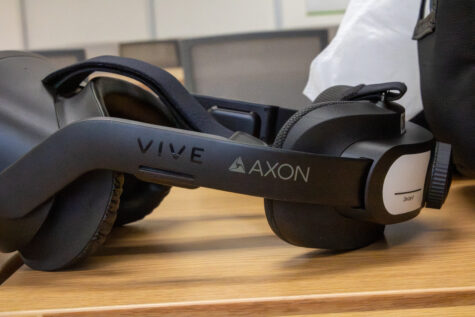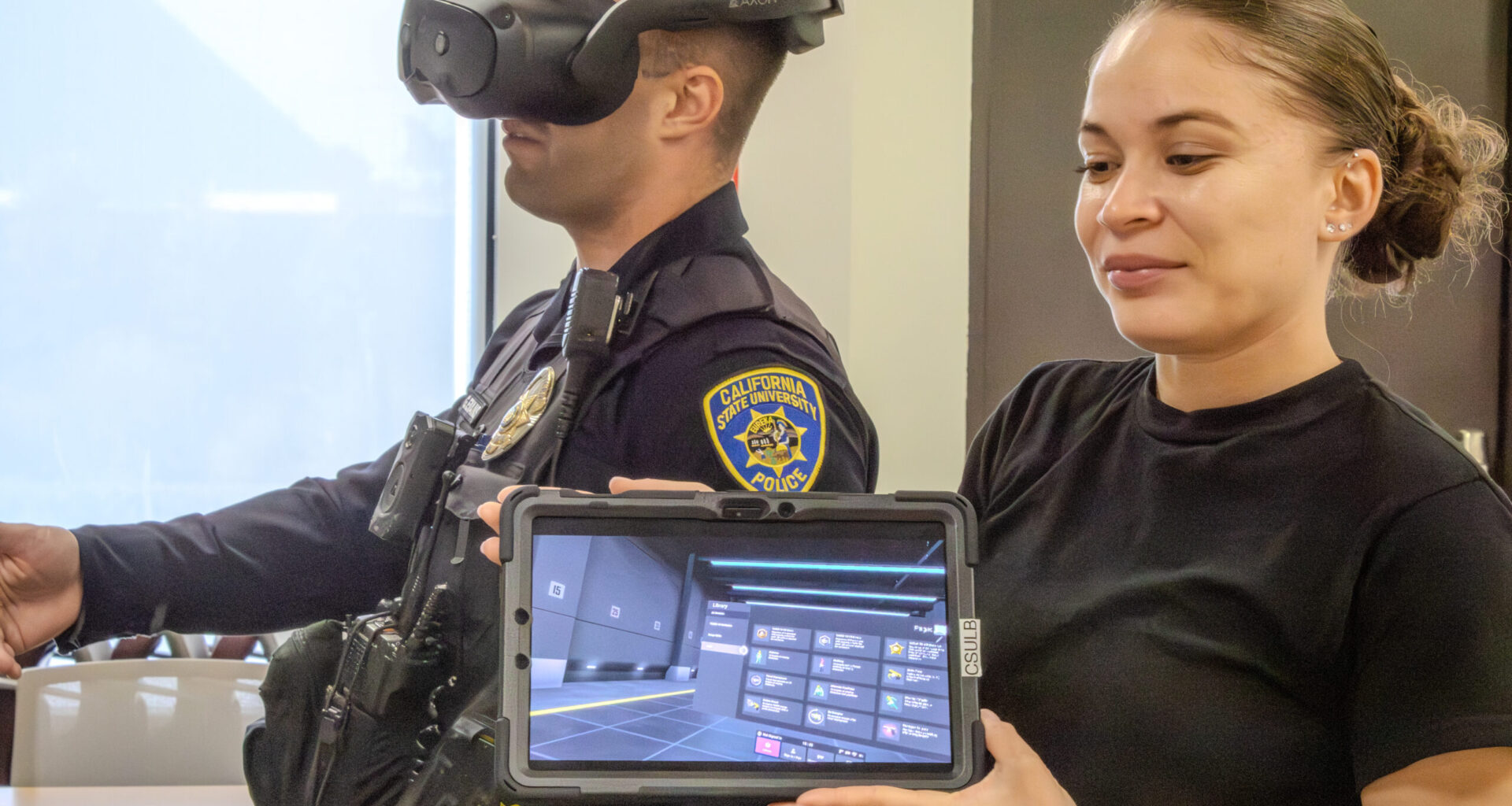
Officer Evans (left) demonstrates the equipment while Community Officer Washington (right) shows the live feed that is viewed on a tablet by trainers during the sessions. Aiden Redsteer | Long Beach Current
The California State University Chancellor’s Office supplied the Long Beach State Police Department with new Axon Virtual Reality equipment during a recent decision to standardize all campus police equipment.
“We are going to be able to get almost real-life scenarios in these trainings and provide them to our officers,” Sgt. Stephen Gray said.
The new VR equipment will provide CSULB police with more training sessions on handling mental health crisis calls and scenarios that require de-escalation skills.
The first round of training with the new equipment started in September of this year, with future VR training expected to begin in the coming months.
Officer Garrett Evans, one of the first trained on the new equipment, will assist in training future officers as the new Axon coordinator.
“We are trying to create realistic scenarios that mimic split-second decisions responding to critical incidents,” Evans said. “We can do it all in a safe environment and help officers be better when they respond to calls out there.”
At first glance, the Axon equipment looks like current VR sets on the market. The Axon set includes a replica of the new Taser 10, a less-than-lethal armament carried by CSULB police, and a tablet that allows trainers to view everything in the virtual space.

The Axon virtual reality headset looks similar to many high-end video game VR systems currently on the market. Aiden Redsteer | Long Beach Current
A Long Beach Current reporter was allowed to try out the new equipment and training sessions.
The virtual trainings supplied by Axon remove any game-like qualities. The sessions last for only a few minutes at a time and are realistic scenarios with life-like individuals in varying degrees of emotional distress.
The trainee must use rapid observation skills and critical thinking to de-escalate a variety of situations.
The training covers issues such as the appropriate time to draw the Taser 10 or use its warning flash, and the situations that justify using the Taser 10 to subdue an individual, like when a weapon is drawn on the trainee.
Next month, the training sessions will incorporate artificial intelligence, enabling trainees to use verbal commands in the scenarios.
The life-like quality of the virtual sessions aims to be closer to actual high-stakes events that occur in the field. Each session will be reviewed with the trainee to improve future actions in real-life situations.
“It’s the perfect opportunity for people to look through the eyes of the police officer,” Evans said.
Community Engagement Officer Corina Washington explained that the VR equipment could be available during future campus police events.
This would give students a chance to go through the training and increase their understanding of police work on campus.
Some training, such as active shooter training, were previously only available every two years due to the amount of time and resources needed to conduct them. With the Axon VR equipment, these training sessions will be accessible to every campus officer at least once a year.
The Los Angeles Police Department has been using a similar technology, V-Armed VR equipment, in recent years. The LA Public Press reported that the LAPD is planning a $10 million facility for the VR equipment and training sessions.
The CSU Chancellor’s Office purchased the Axon equipment for all 22 CSU Police Departments, but has not responded to the Long Beach Current regarding the cost of the equipment.
The Axon equipment will not require a dedicated facility. Additionally, there was no direct cost to CSULB students.
“It makes this flexible, we can do this at the station or we can do it in a classroom,” Sargent Gray said. “We can even provide students who do not understand police, some actual real-life scenarios. The possibilities are endless with this technology now.”

